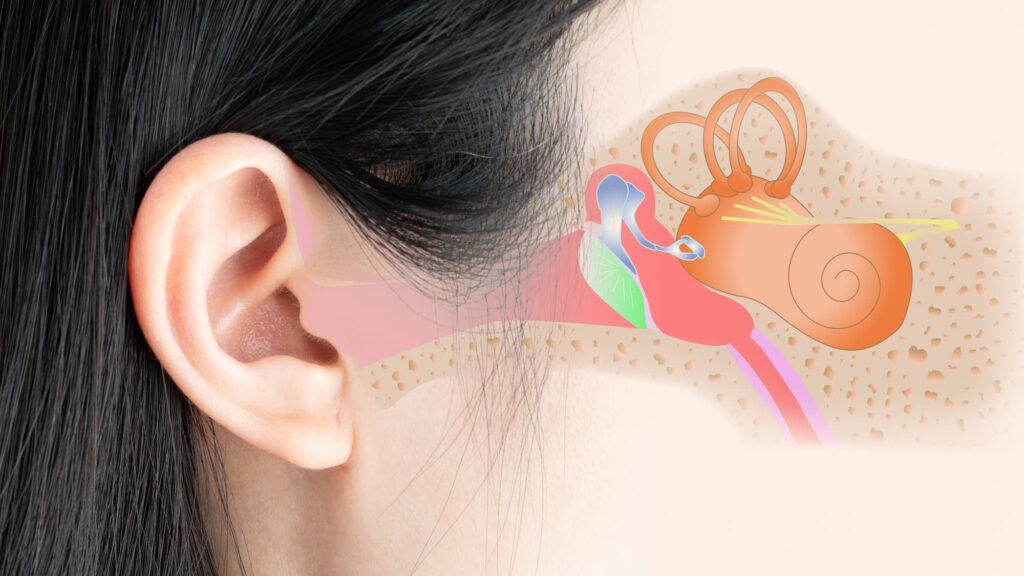Anatomy and Physiology of the Ear
09-05-2023
An ear plays a crucial role in the body. This organ helps you converse with friends and know what is happening around you. In the bargain, the ear helps you maintain balance when moving.
So how does this body part perform the complex tasks of hearing and maintaining balance? Oliveira Audiology & Hearing Center has taken a closer look at the ear anatomy. Learn how the ears work.

Anatomy of Ear
The diagram of the ear has an outer, middle, and inner ear. Even though each of the three parts performs different functions, they all work in tandem to maintain optimal body balance and hearing. Here is a sneak peek of the functions of each section.
Outer Ear
The outer or external ear is the visible part of your ears that stick out of the head. It consists of the pinna, the curved, funnel-shaped part of your ear. Moreover, the outer ear has the external auditory meatus, a canal that runs from the pinna to the middle ear. The ear canal has wax glands and tiny hairs to trap debris.
Middle Ear
The middle ear section starts from the eardrum to the inner ear. This part regulates ear pressure and processes sound waves. The middle ear section is made up of a couple of parts. It has a tympanic membrane separating the outer and middle ear.
Furthermore, this middle section of the ear has ossicles and the Eustachian tube. The ossicles are three tiny bones that are not larger than an orange seed. These bones making up the ossicles include the malleus, incus, and stapes.
The Eustachian tube is responsible for equalizing your middle ear pressure. The Eustachian tube has a mucus lining.
Inner Ear
The inner ear section is located deep inside an ear. It consists of the cochlea, a part with a characteristic spiral shape. Besides the distinct shape, the cochlea has a fluid-filled chamber that vibrates to sound.
Apart from the cochlea, the inside diagram of the ear features semicircular and vestibule canals. These two parts of the ear anatomy provide balance when you turn or tilt your head.
Physiology of Hearing
Hearing begins when the pinna picks up sound waves from your environment. Afterward, this outer part of the diagram of the ear sends the sound waves to the eardrum. The waves travel from the pinna to the eardrum via the ear canal.
Upon reaching the eardrum, the eardrum vibrates and transmits the vibrations to the auditory ossicles. The tiny bones that comprise this part of the ear anatomy amplify the vibrations and transmit them to the fluid-filled cochlea.
The cochlea converts the vibrations into electrical signals. These signals are then transmitted to the brain, which converts them into sounds you can recognize. Moreover, the brain helps characterize the sound’s pitch, volume, and direction.
The hearing process occurs smoothly in a healthy hearing system. However, as is common with other body parts, ears are prone to malfunctioning. The impairment occurs when you have infections or an imbalance in ear pressure.
Beyond infections and pressure, your hearing may be affected if the eardrum is damaged or the ear canal is blocked. Most hearing problems can be treated by experienced doctors at Oliveira Audiology & Hearing Center.
Trust Oliveira Audiology & Hearing Center for Expert Hearing Evaluations
With the complicated anatomy of the ears, treating hearing problems can be tricky. However, that is not the case at Oliveira Audiology & Hearing Center. We are a family-oriented team with over 25 years of experience treating mild to complex hearing problems.
We use modern equipment to diagnose your hearing problem. Once we diagnose your issue, we create a personalized treatment plan to manage your condition.
Contact us to discuss your ear health concerns with an audiologist.
Orawan Pattarawimonchai/Shutterstock

